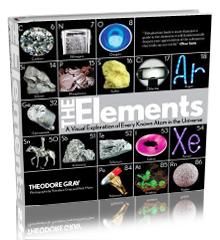Tin Coins. | |||
| Sample Image | Spin Video | QuickTimeVR Rotation | |||
| Tin Coins. These are tin coins from Warut's homeland of Thailand, sent to him by his grandmother. They demonstrate the fact that if tin is kept fairly cold (less than 13C or so) for a period of months or years, it will slowly convert into the "gray tin" allotrope, which is brittle and crumbles. The coins on the left, from 1946, have obviously spent a few winters in a cold climate, while the ones near the top, from 1950, have not. The very shiny one on the right is also from 1946, which proves that it's temperature, not age that determines whether they go bad: Tin is highly corrosion resistant and will stay shiny for a long time, as long as you don't let it get too cold. Here is an interesting article about gray tin and allotropes in general. Source: Warut Roonguthai Contributor: Warut Roonguthai Acquired: 21 June, 2003 Text Updated: 11 August, 2007 Price: Donated Size: 0.6" Purity: >95% Sample Group: Coins | |||
|

